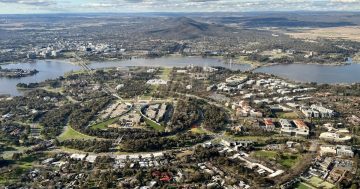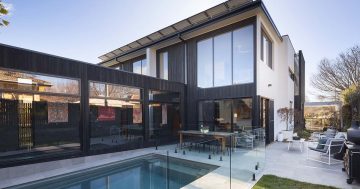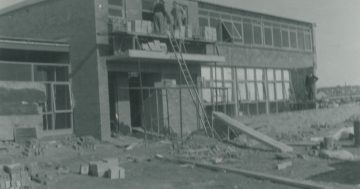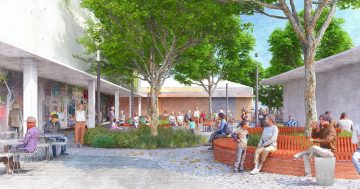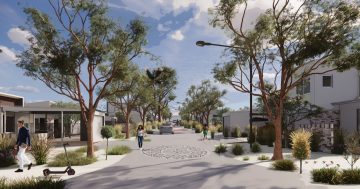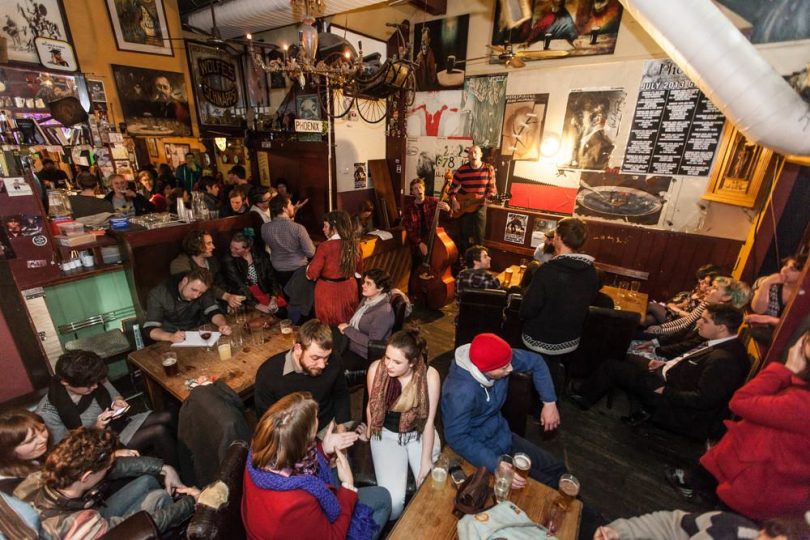
Venues like The Phoenix in Civic were epicentres for university life. Photo: Adam Thomas.
A few weeks ago, I drove my car across Commonwealth Avenue Bridge for the first time in months. Since the outset of COVID-19, I have had very little reason to go south of the bridge from my northside home and community.
Driving through the leafy streets of Deakin, heading into my office after months away, I pondered whether it’s possible for me to live my life entirely on the northside of Canberra without ever having to venture south.
Now, before people start stretching their fingers, ready to jump into the comments to defend their region of choice, I’m not suggesting that either the northside or southside of Canberra is superior to the other.
But I am curious about whether a city as small as Canberra can have genuinely distinct cultures in its different regions.
I’ve definitely found that most Canberrans I know have a very clear preference when it comes to which side of the bridge they want to live on. And for many, the distinction is more important when we’re talking about the difference between the inner south and the inner north.
Once you’re talking about living in the outer stretches of the city on either end, the decision feels more practical, driven by considerations like commuting distance to work, and school choices for children etc.
Of course, when we talk about ‘choice’ in relation to where we live, it’s important to note that the degree to which we can choose our preferred suburb is constrained by our finances. As a renter, I was able to move much more freely between suburbs because a sharehouse room in the inner north versus one in Duffy isn’t too different in price (or at least it wasn’t in the mid-2000s).
But when we were looking to buy, our range of options did shrink considerably according to our budget.
Putting that to one side, though, and if money was no object, I wonder if I would choose to move out of north Canberra? And would my friends who have exclusively rented southside ever choose to pick up sticks and make the trek across the bridge to the north?
When I think of what drew me to the inner north when I first moved out of my family home at age 21, it was the reputation the suburbs of Dickson, Lyneham and O’Connor had as the epicentre of university life for young people.
Almost all of my friends lived in sharehouses in one of those three suburbs and we converged at The Front in Lyneham for gigs and poetry nights, or enjoyed the easy walk into Civic to head to the Phoenix.
We were close to the ANU, and the overarching feel of the area was one of urban adventure. This makes sense, of course, because the geographic location of the university did influence the demographics that chose to live in the surrounding suburbs and impacted the types of events, activities and businesses that congregated there too.
For my friends who chose to stay in the south, living in rentals in Griffith and Deakin, some choosing further out like Weston Creek or Duffy, they enjoyed the access to the restaurants and cafes of Kingston and Manuka, and going for walks on Red Hill, or by the southside of the lake.
From where I lounged on the veranda of my Dickson duplex sharehouse, I could see that the south did have a lot to offer – but it looked more genteel and refined than the student-dominated inner north.
After uni, we did the common drift from sharehouses in Dickson to apartments in Turner and Braddon, and then houses in Downer and Watson. Our moves were defined by more income, and opting out of sharehouse living to be with our partners or live alone as we matured.
The other day, walking the dog to Watson shops, we joined throngs of people in their 30s hanging outside The Knox waiting for coffees while our various canines flopped at our feet or lethargically sniffed each other.

The Knox is pet friendly (and also welcomes hipsters). Photo: Daniella Jukic, We Are Found.
There was something particularly gratifying about seeing people out in the sunshine after a year of isolation. I looked around and recognised in the throngs the things that make me feel at home anywhere in the world – a love of coffee, dogs and lazy mornings.
I’m pretty sure that if we lived in Griffith and had walked the dog to the Manuka shops, we would have found good coffee and pastries too, but would the vibe have been different?
Would I have seen the same combinations of hipster beards and brightly printed shirts on the men, and nose rings and Gorman dresses on the women? Would people have ridden their fixed gear bikes to the shops, with Keep Cups hanging out of their back pockets?
Are the things that signify an inner north culture to me actually unique to the inner north or just to the stereotypically ‘hipster’ places I tend to hang out?
Are our suburban cultures distinct in the ACT, or do they just feel that way because many of us don’t venture from one side of town to the other except for work?













